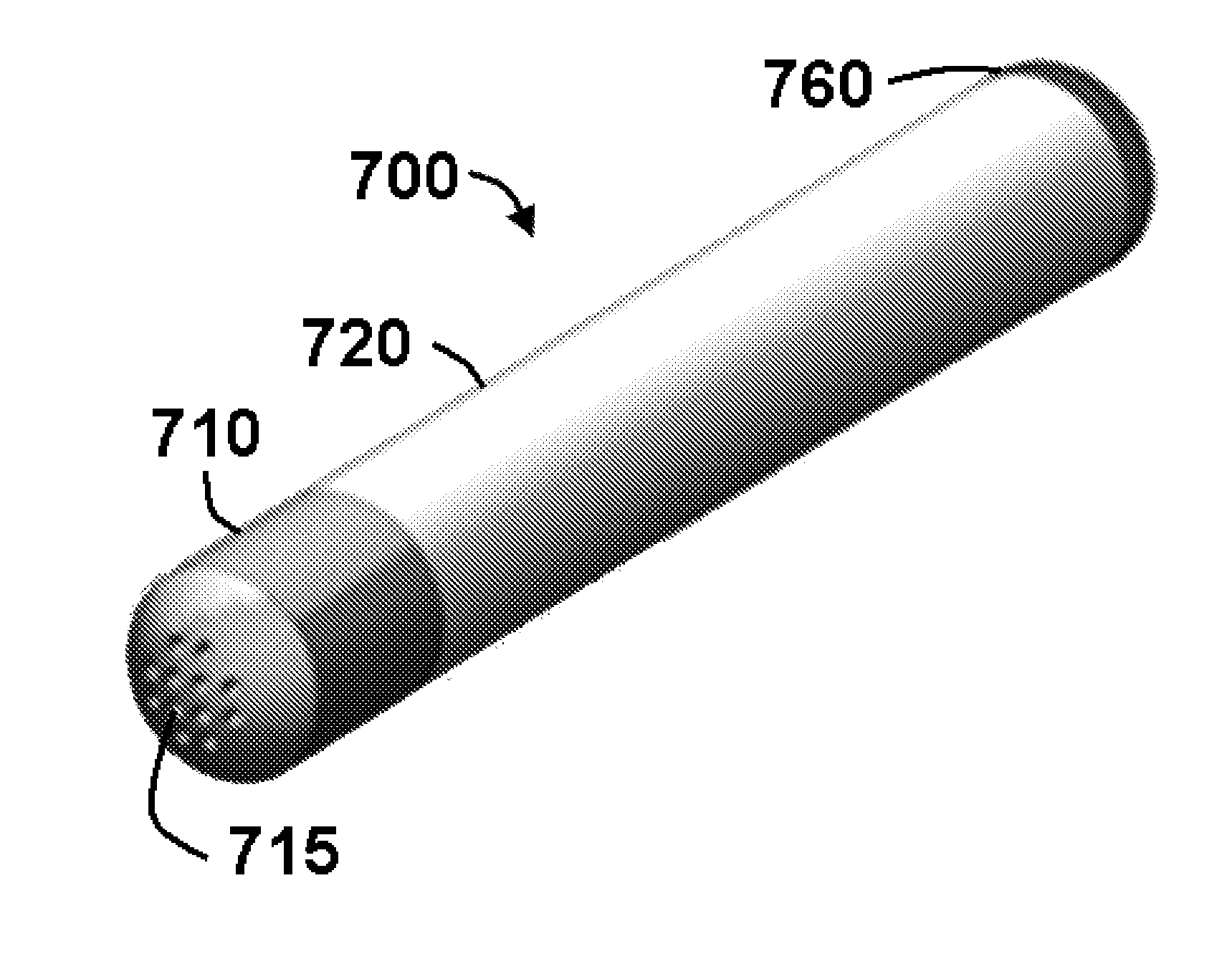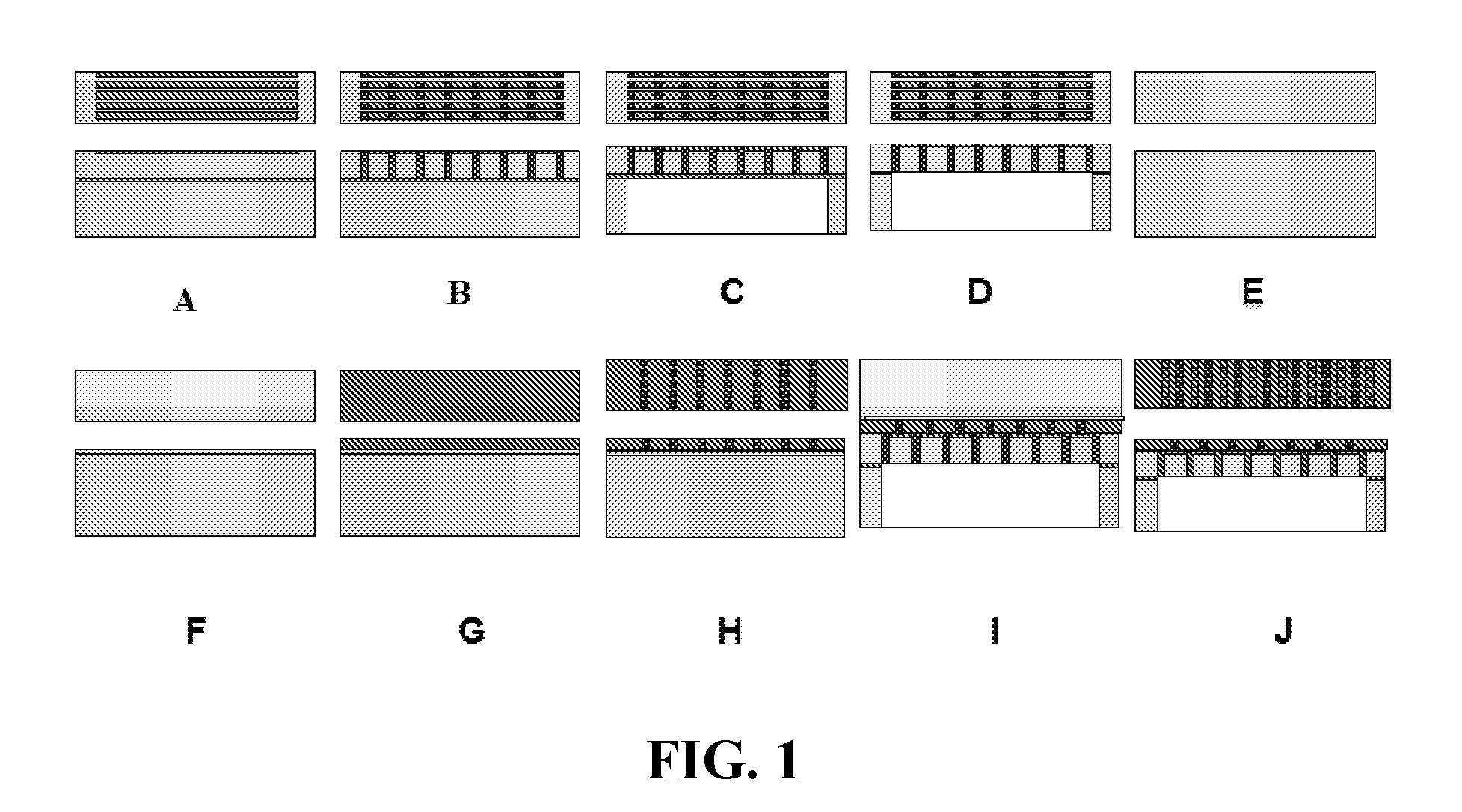Nanochanneled Device and Related Methods
a technology of nanochannels and therapeutic agents, applied in the direction of machines/engines, transportation and packaging, catheter, etc., can solve the problem that the creation of therapeutic agent delivery devices capable of controlling the delivery of therapeutic agents is still a challenge, and achieves high mechanical strength, high flow rate, and high molecule transport rate
- Summary
- Abstract
- Description
- Claims
- Application Information
AI Technical Summary
Benefits of technology
Problems solved by technology
Method used
Image
Examples
example 1
[0180]The capsule as described herein is used to administer leuprolide acetate for the treatment of prostate cancer. Leuprolide acetate (USP 31) is a synthetic nonapeptide agonist analog of luteinizing hormone-releasing factor (LNHR). The leuprolide acetate molecule is approximately 1209 Daltons in weight and two to three nanometers in size. It is soluble in aqueous media at a level of approximately 10 mg / mL. An existing method of administering leuprolide via extended release is disclosed in U.S. Pat. No. 5,728,396 filed Jan. 30, 1997 and incorporated herein by reference.
[0181]The nanochannel delivery device chip is installed in a capsule as described herein and filled with a 5 mg / mL leuprolide acetate solution (NDC number 0703-4014-18) for use in the treatment of prostate cancer. The capsule is sized to approximately 2.8 mL, so that the filled capsule contains approximately 14 mg of leuprolide acetate. If stronger concentrations of leuprolide acetate solution are used, the capsule ...
example 2
[0184]The capsule and nanochannel delivery device are configured and implanted as described in Example 1. However, instead of administering leuprolide acetate, the capsule and nanochannel delivery device administer letrozole for the treatment of breast cancer. The limited success of chemotherapy for the treatment of breast cancer emphasizes the need of novel preventive strategies to minimize the cancer occurrence. Recent studies have highlighted that aromatase inhibitors are promising chemopreventive agents for breast cancer through inhibition of estrogen biosynthesis. In particular, research has suggested that letrozole is an ideal candidate for chemoprevention for women in high risk group such as BRCA1 positive. However, the low efficacy and the side effects associated with the conventional systemic administration of letrozole are limiting factors for its long term usage.
[0185]Breast cancer growth is highly dependent on estrogen, and thus inhibition of estrogen is highly effective...
example 3
[0190]The capsule and nanochannel delivery device are configured and implanted in a patient as described in Example 1. However, instead of administering leuprolide acetate, the capsule and nanochannel delivery device administer lapatinib for the treatment of breast cancer.
PUM
 Login to View More
Login to View More Abstract
Description
Claims
Application Information
 Login to View More
Login to View More - R&D
- Intellectual Property
- Life Sciences
- Materials
- Tech Scout
- Unparalleled Data Quality
- Higher Quality Content
- 60% Fewer Hallucinations
Browse by: Latest US Patents, China's latest patents, Technical Efficacy Thesaurus, Application Domain, Technology Topic, Popular Technical Reports.
© 2025 PatSnap. All rights reserved.Legal|Privacy policy|Modern Slavery Act Transparency Statement|Sitemap|About US| Contact US: help@patsnap.com



